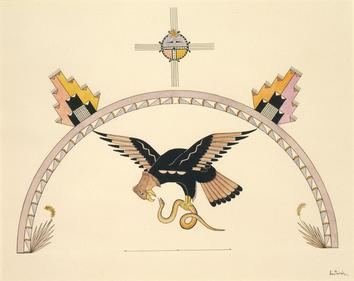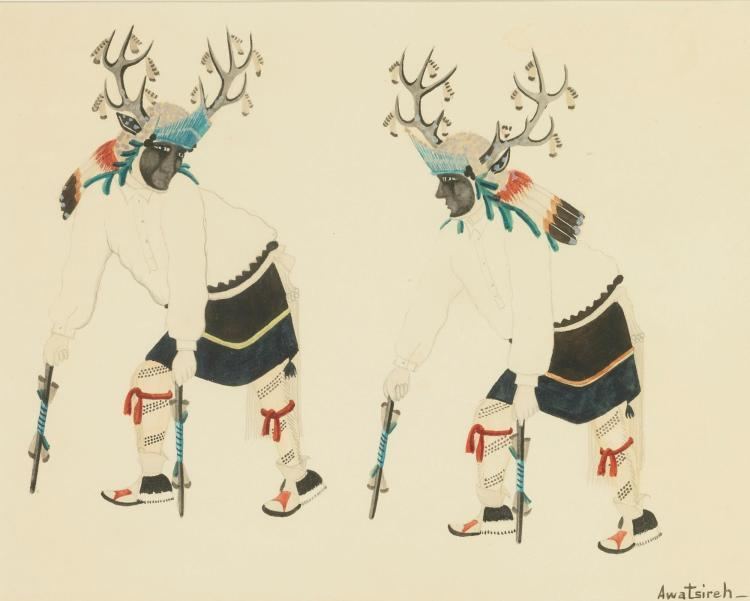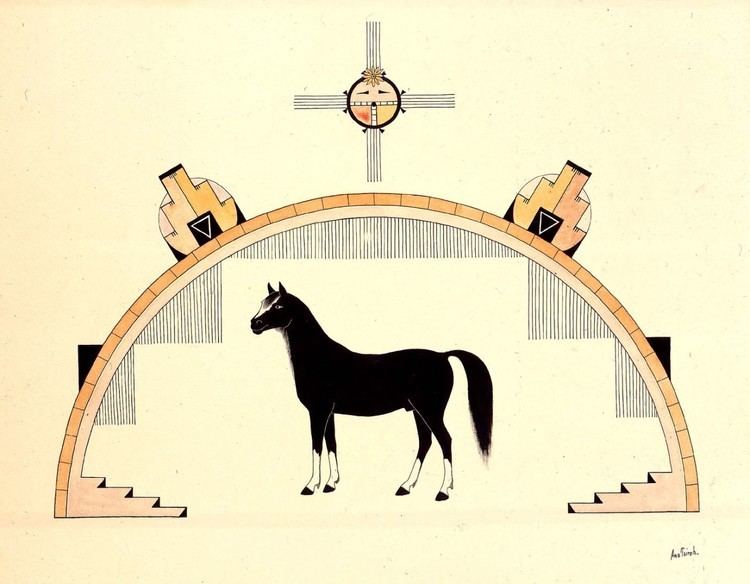Known for Painting | Name Awa Tsireh | |
 | ||
Full Name Alfonso Roybal, Cattail Bird Born February 1, 1898 ( 1898-02-01 ) San Ildefonso Pueblo Movement San Ildefonso Self-Taught Group Awards Ordre des Palmes Academiques, 1954 Died March 30, 1955, San Ildefonso Pueblo, New Mexico, United States | ||
Awa Tsireh (February 1, 1898 – March 30, 1955), was a San Ildefonso Pueblo painter also known as Alfonso Roybal and Cattail Bird. He was part of the art movement known as the San Ildefonso Self-Taught Group.
Contents

Early life

Awa Tsireh's family was very active in the arts. His parents were Alfonsita Martinez, a native potter, and Juan Estaba Roybal, the nephew of the known potter, Cresencio Martinez. His nephew was pueblo painter, José Disiderio (J.D.) Roybal.

He was one of the earliest of the San Ildefonso painters and his formal education did not extend past grade school.
In 1917, American artist William Penhallow Henderson painted a portrait of young Awa Tsireh which can now be found in the New Mexico Museum of Art. Henderson's wife, Alice Corbin Henderson, was a patron of Awa Tsireh.
In 1920 he married a woman from the village. The following year she gave birth to a son, but mother and child died soon after. Affected greatly, Awa Tsireh moved to his parents' home.
Work
Awa Tsireh had the support of Dr. Edgar Lee Hewett, who provided studio space for him in the Palace of the Governors. His art is in the permanent collection of several museums, including the Smithsonian American Art Museum.
At various times in his life, Awa Tsireh was a farmer, a pottery painter, a museum employee, a painter, a silversmith and a muralist. One of his most notable artistic commissions was for a mural at Maisel's Indian Trading Post in Albuquerque, New Mexico where murals depicting Indian life, painted by Pueblo and Navajo artists, were prominently displayed.
Metalwork
It is not known when, or from whom, Awa Tsireh learned silversmithing but by 1931 newspaper articles described him as a painter, silversmith and dancer. Around 1930 he began working in the summer months at Garden of the Gods Trading Post in Colorado Springs, and was employed there for at least two decades. His sister, Santana Martinez, recalled that "during the summer during the thirties and forties he used to go to a shop in Colorado Springs and do paintings and silverwork there." He worked in silver, copper, nickel silver and aluminum.
Media
Tsireh worked in watercolor and in transparent colored ink and pencil. He also created silver and gemstone pieces of art. Awa Tsireh painted in 3 different styles; a simple realism, a combination of symbolism and realism, and a completely non-realistic style, per Samuels' Encyclopedia of Artists of the American West, (1968).
